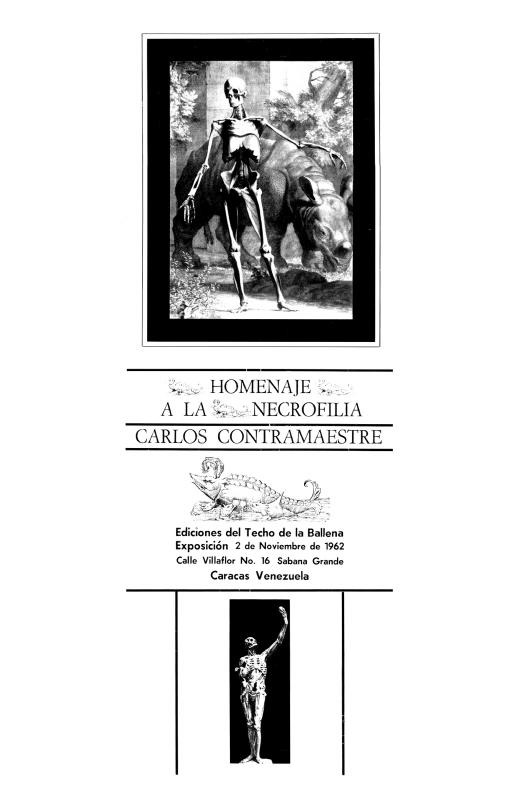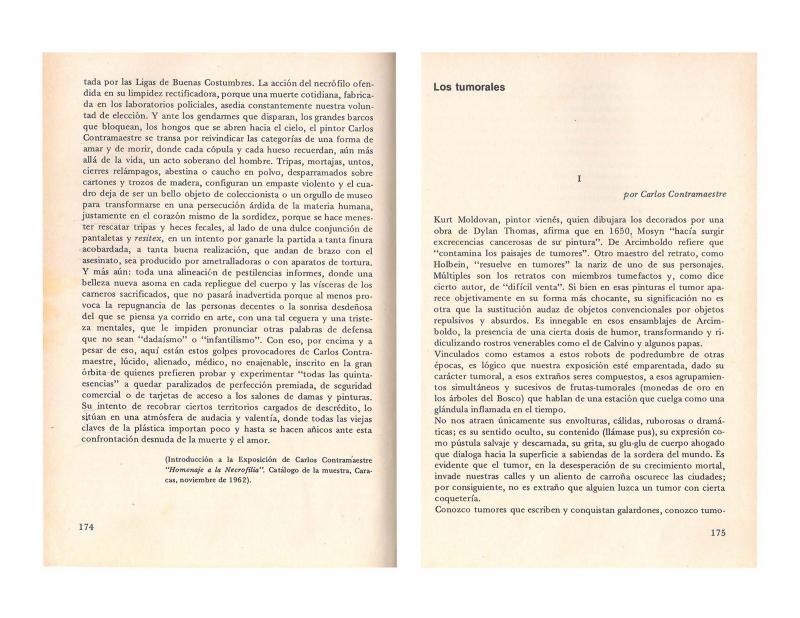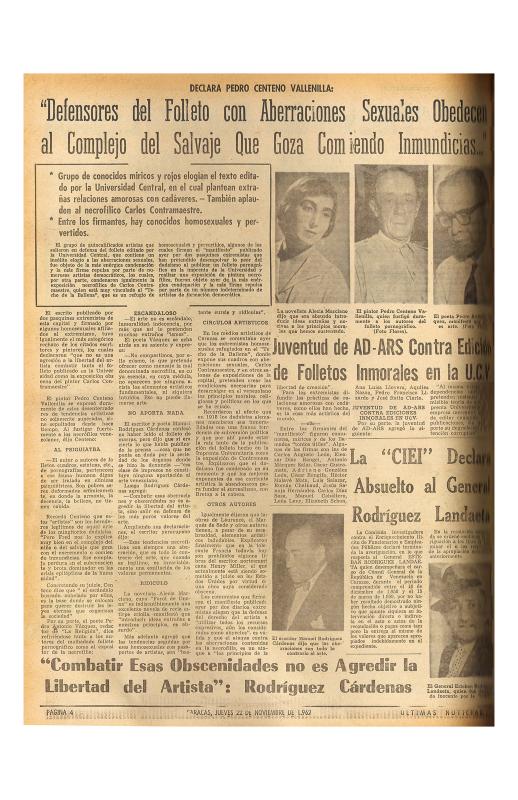At the time this “Tercer Manifiesto” appeared, the El Techo de la Ballena group’s rebellious tactics were being criticized from several quarters, including visual artists, writers, the public and the press, conservative and progressive, right and left, traditional, folk, and avant-garde, which is why this manifesto defends against them all. It is, essentially, a declaration of independence from dogmatic (inflexible and stuffy) attitudes of any kind. It is a revolutionary proclamation in the purest sense of the word that critiques not just the pillars of established society but those that threaten it, for using methods that are inefficient, hackneyed, and dogmatic. All that notwithstanding, the manifesto’s stellar contribution is the language in which it is written by Adriano González León (1931–2008), one of the best-known Venezuelan authors and a distinguished member of the group. Using enlightening and irreverent metaphors, humor, and wit he evokes a vivid sense of the spirit of Venezuelan cultural society in those days.
El Techo de la Ballena was a group of Venezuelan avant-garde visual artists and writers who, from 1961 through 1968, combined a number of different disciplines—including visual art, poetry, photography, cinema, and action art—to create a revolutionary kind of art that questioned traditional social and cultural values during one of the most violent decades in Venezuelan political history; the group was the artistic equivalent of that same turmoil. Guerilla warfare, the intellectual left’s proclamations, repression, cities deformed by the forced, accelerated development model of the nascent democracy of the Betancourt period were its frame of reference. The group’s visual arts assumed the aesthetic of Informalism, to which they added a hefty dose of aggression directed at the axiology of abstract geometry, traditional landscape art, and even social realism with subversive, provocative, irrational, and surreal undertones. Their extensive published works—including the three issues of Rayado sobre el Techo magazine—are mentioned as are their exhibitions. The group’s members include, among others, Carlos Contramaestre, Juan Calzadilla, Caupolicán Ovalles, Edmundo Aray, Francisco Pérez Perdomo, Salvador Garmendia, Adriano González León, Fernando Irazábal, Daniel González, Gabriel Morera, Gonzalo Castellanos, Perán Erminy, and the foreigners who had settled in the country: Dámaso Ogaz from Chile and the Spaniards J. M. Cruxent, Ángel Luque, and Antonio Moya.
To view other articles and essays by members of the El Techo de la Ballena group, see also by González León “Homenaje a la necrofilia” [doc. no. 1097543], about love and death in Carlos Contramaestre’s works exhibited at the Homenaje a la Necrofilia (Caracas: Galería El Techo de la Ballena, 1962); and Juan Calzadilla and Contramaestre’s “Los tumorales I y II” [doc. no. 1097559], where they introduce the exhibition Los Tumorales by Contramaestre (Caracas: El Techo de la Ballena, 1963).
The group’s most controversial project was Homenaje a la Necrofilia as explained in the article “Declara Pedro Centeno Vallenilla: Defensores del folleto con aberraciones sexuales obedecen al complejo del salvaje que goza comiendo inmundicias...” [doc. no. 865836].



